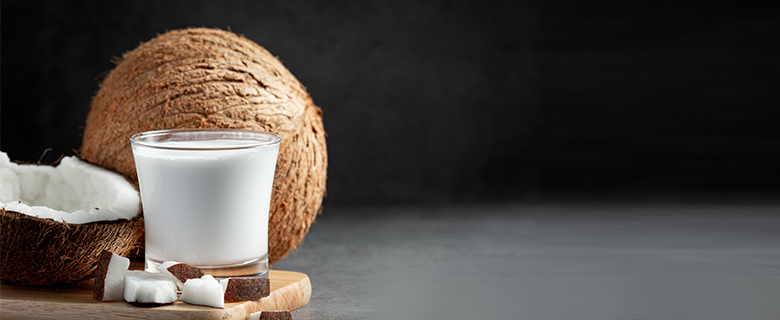
Balancing Pitta Dosha
Pitta is one of the three main doshas (Vata & Kapha the other 2) in our body that regulates our metabolism and the digestive system. Pitta controls the digestive fire or Agni and is responsible for how we digest our food. Any imbalance in the Pitta dosha can cause digestive and stomach-related ailments as well as emotional & mental problems such as acidity, heartburn, diarrhea, migraines, short temper, irritability, etc. and thus it is vital that this imbalance is corrected immediately.
Ayurvedic wellness methods advise altering your diet to include foods that flush out toxins, ensure smooth bowel movements for a healthy gut and help pacify the pitta imbalance. In addition to ayurvedic diet, practicing yoga for pitta dosha is also highly beneficial. Read on to find out how you can balance pitta dosha to stay healthy…
The recommended diet for Pitta dosha

Ayurvedic classical texts state that to balance any aggravated dosha, it is necessary to practice the principle of opposites. Simply put if Pitta dosha is characterized by hot, sharp, oily, and acidic traits we can counter the dosha by including a diet that has opposing qualities such as dry, cool, light, and sweet.
Foods that have a cooling/soothing effect on the stomach –
Sweet fruits, milk, coconut, almonds, dates are some foods that can cool the heat created by pitta dosha quickly.Taste matters –
Ayurveda states that bitter, astringent & sweet foods help balance pitta dosha. Conversely avoid salty, spicy, and sour tasting foods as they aggravate the pitta dosha.Dry foods –
In order to counter the liquid nature of pitta, eat dry foods such as cereals, puffed rajgira or puffed rice with husk for snacking.Vegetables –
Vegetables such as carrots, asparagus, bitter leafy greens, fennel, broccoli, cauliflower, brussels sprouts, green beans, avocado, cilantro/coriander, peas, pumpkin, radishes, cabbage, sweet potato, spinach, lettuce, okra, cucumber, potatoes, leafy greens, celery, mushrooms are beneficial to balance pitta dosha. You can also mix veggies with grains or beans (moong) to make them healthier. Make sure you eat well cooked vegetables. Avoid (or eat very less quantity) potatoes, eggplants/brinjals, peppers and tomatoes as they can be gassy and leave you feeling bloated.Fruits –
Include fresh & juicy fruits, especially with a sweet & astringent taste such as pomegranate, watermelon, strawberries, figs, grapes apples, mango, orange, melons, apricots, papaya, plums, berries, cherries, coconut, dates, pear etc. to balance pitta dosha.Grains & legumes –
Basmati rice, wheat, barley, quinoa, wheat bran, oats are grains that support a pitta diet. Pitta types need to avoid muesli, yeast products and corn. Legumes such as moong, kidney beans (rajma), black beans (kali dal), chickpeas (chole), split peas and soya beans are astringent in nature and help counter the pitta dosha. Avoid urad dal, soy sauce as they have a higher salt content which can aggravate pitta.Dairy –
Homemade ghee, fresh (naturally sweet) homemade curd, cow milk, freshly made white butter are some dairy products that help with pitta dosha. Avoid sour curd, salted butter, or dairy products that have preservatives in them.Spices –
Including the right quantity of spices in our daily diet is essential to good health. For pitta dosha make sure to choose spices that are not too hot or pungent. Spices such as turmeric, cumin (jeera), coriander (dhaniya), cinnamon (dalchini), cardamom (elaichi) and fennel (saunf) not only add flavor and aroma to your food but also help counter pitta imbalance.Nuts & seeds –
Although nuts & seeds are oily in nature and as such not conducive to a pitta type Prakruti, there are some nuts such as almonds (soaked, skin removed), pumpkin seeds, flax seeds, sunflower seeds which can be eaten in moderate quantities. Avoid cashews, walnuts, pista, peanuts, sesame seeds.Meats –
For non-vegetarians who have pitta Prakruti, it is better to eat meats that are sweet and dry such as chicken, freshwater fish, shrimp, egg whites etc. Avoid beef, pork, salmon, tuna, turkey etc.Oil –
Pitta is oily in nature, so it is important to use oils, such as coconut oil, olive oil, sunflower oil, desi ghee, in our daily cooking that balance pitta dosha.Sweets –
Although sweet foods help balance the pitta dosha it is important to have any sweets in moderate quantities. Avoid honey & molasses (syrup).
Recommended Yoga Asanas to balance Pitta Dosha

Practicing daily Yoga does not only exercise your body but also calms and quietens your mind. Here are some specific Yoga asanas/postures that help balance the pitta dosha. But remember, Pitta Yoga asanas must be done under the supervision of an expert Yoga teacher and after consultation with your Ayurvedic doctor.
Pranayama –
The most widely practiced Yoga to correct Pitta Dosha Imbalance is Pranayama which promotes systematic breathing. According to time tested Yoga practices, exhaling through the mouth helps release heat thus balancing the pitta dosha. Regularly doing pranayama also helps prevent/cure ulcers that are a common problem with people of pitta prakriti.Pascimottasana & Uppavistakonasana
include forward bending which has a cooling effect on the body and helps cool the pitta heat, especially in the pelvic area.Ardhamatsyendrasana
is helpful for the abdominal area where you first stand straight and then bend forward in a bow/cobra pose to pacify pitta dosha.Nadisodhana
or breathing through alternate nostrils is a type of meditation done sitting down which helps balance pitta dosha.Maitreya meditation
s a meditation technique that helps you overcome anger, impatience and hunger pangs, all known problems arising from pitta dosha.Practicing Yoga asanas such as Bhujangasana, Ardha Naukasana, Utkatasana can also help with pitta dosha.
Pitta pacifying Yoga asanas are those that don’t create too much heat in your body and have relaxed, non-strenuous movements. Avoid doing head stands as they gather heat in your eyes and head, thus aggravating pitta.
Keep alternating the asanas so that your body and mind don’t find it repetitive. Ideally focus more on inhalation of breath as this has a cooling effect and helps diffuse the hotness created by pitta dosha. Exhaling breath slowly can help in calming the senses, letting go of frustrations and anger.
A healthy diet and regular practice of Yoga can help balance pitta dosha effectively. Before altering your diet or starting yoga, do consult an expert Ayurvedic doctor, Yoga Practitioner for personalized diet & wellness plans as well as yoga guidelines that are suited to your health requirements which can help balance your pitta dosha.





0 Comment
No comments found.Thank you. Your comment will be visible after an approval.
Add your comment